![]() This procedure is for standard brakes only. People with ABS systems need to look elsewhere to see how to bleed thier brakes. I used to own a BMW motorcycle with ABS and a vacuum bleeder worked for them, but many auto systems are pressurized with a mechanical pump, which makes this procedure incorrect for these cars.
This procedure is for standard brakes only. People with ABS systems need to look elsewhere to see how to bleed thier brakes. I used to own a BMW motorcycle with ABS and a vacuum bleeder worked for them, but many auto systems are pressurized with a mechanical pump, which makes this procedure incorrect for these cars.
![]()
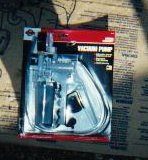 | |
Be VERY carful during this step!! Brake fluid will strip paint right off the body of your car. When you have the master cylinder empty, I use a clean rag (I use old diapers, if you have no kids, the diaper services sell old ones as rags) to clean it out. Then I re-filled it with new fluid. |
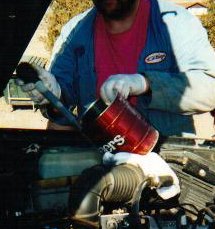 |
I then put the wrench on the bleeder and put the hose on after that. the hose helps hold the wrench on the bleeder. |
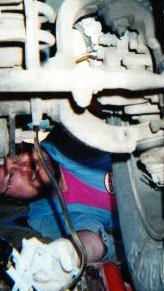 |
| I pump the pump a few times before I open the bleeder so vacuum is present before the valve is open. That way you are drawing fluid out of the system and not allowing air into the system. You also need to keep the catch cup upright so the fluid stays in the cup and doesn´t get past the cup into the pump. Depending on how big you front calipers are, you may need to empty the catch cup before you get clean fluid out of the vent. You also need to keep an eye on the fluid in the master cylinder, if you suck it all out and get air in the system, you will have to start all over again. So keep an eye on the level, keep it full. | 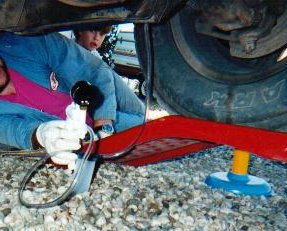 |
| Here you can see the dirty stuff filling the catch cup. The tubing that comes with the vacuum pump is clear so you can see when clean fluid starts comming out of the bleeder vent. | 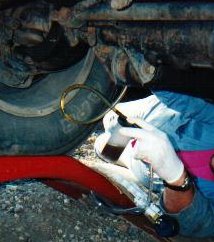 |
| Here is a shot of the rear. The wheel cylinders hold less fluid than disc calipers do so it will take less time to do the rear. All of the same rules apply, keep vacuum on the system while the vent is open, and keep the cup upright to catch the fluid and keep it out of the pump, and watch the fluid level in the master cylinder. | 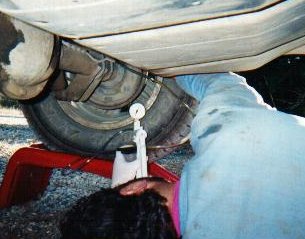 |
![]()
